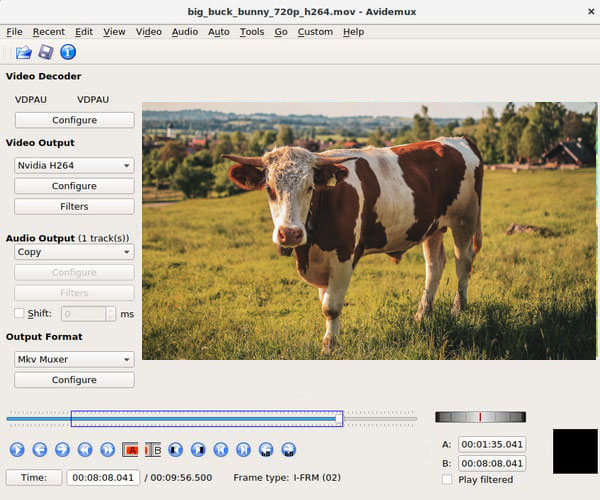

In order for the program to work properly and support the aforementioned multimedia formats, Linux users need to install some optional, yet important packages, such as LAME, FAAC, FAAD2, JACK, SDL, x264, Xvidcore and a few others. Therefore, you will probably end up using the FFmpeg command-line software to work with MP4 files, which are pretty popular these days. While the application supports the MPEG-4 AVC/ASP, MPEG-2, MPEG-1, H.263 and a few more other video file formats, it always encounters problems with the MP4 H.264 format.

It supports well-known multimedia file types, including DVD-Video, AVI, MKV, MPEG2, MP4 and ASF, by using a wide range of multimedia codecs that are installed on your operating system. In addition, you can use the application to build VBR (Variable bitrate) time maps, append video files, connect to a running AvsProxy instance, as well as to save and load projects. You can set multiple markers for video cutting tasks, zoom videos, change frame rate and encoder settings, preview files or set multiple audio tracks. With Avidemux, users will be able to automate tasks using powerful scripting functionality, as well as the built-in projects and job queue. It is officially supported on Linux, BSD, Microsoft Windows and Mac OS X.

It can be used for basic video encoding tasks, filtering, cutting and more. Avidemux is an open source application that provides an easy-to-use and cross-platform video editing solution.


 0 kommentar(er)
0 kommentar(er)
